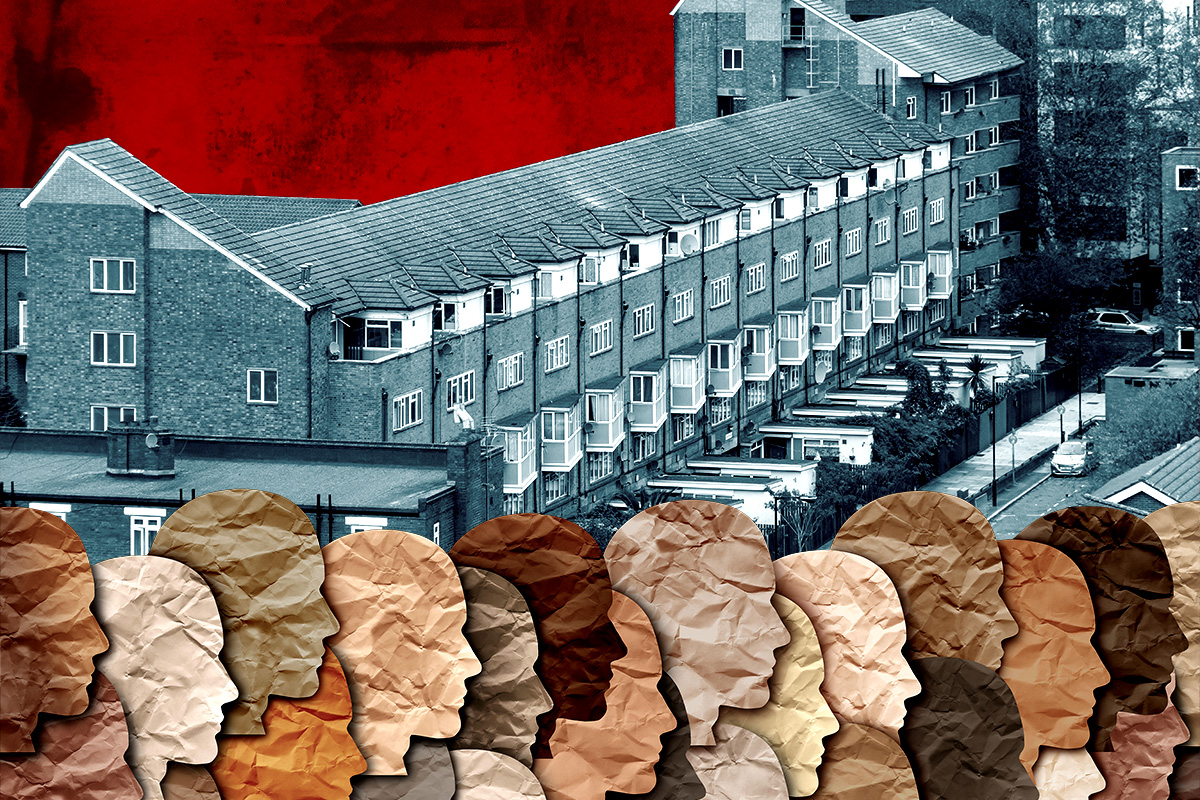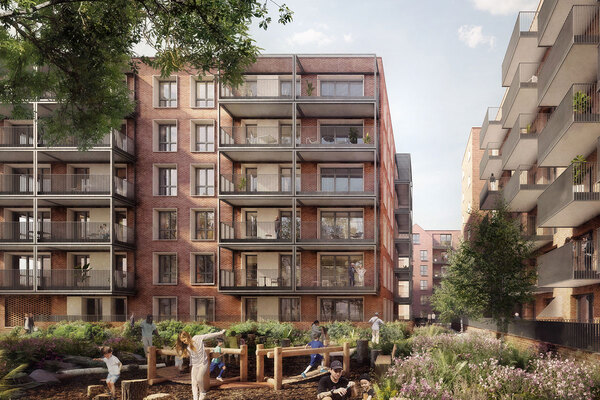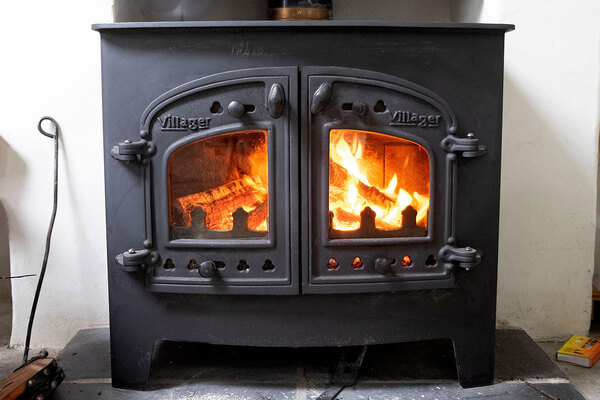Despite progress, there is still work to be done for better social housing
The Better Social Housing Review into the quality of social housing was launched one year ago. Stephen Delahunty evaluates the success of this “profoundly radical” plan to lift standards and “refocus” on the sector’s core purpose
The Better Social Housing Review (BSHR) was launched a year ago this month because, as an op-ed by the Peabody and Mosscare St Vincent’s chief executives put it, “there have been too many defining moments and too many heart-breaking stories where tenants and whole communities have been let down”.
At the time, the sector was reeling from a wave of shocking media reports that had uncovered terrible conditions in some social housing.
These included the high-profile death of Awaab Ishak, after a coroner’s report found that the two-year-old died from a respiratory condition caused by prolonged exposure to black mould in a one-bedroom flat managed by Rochdale Boroughwide Housing.
The BSHR promised to change things. The message behind the review was welcomed across the sector. One commentator described it as “profoundly radical”, and the action plan that followed it as a “defining moment” in a sector with too many of them.
As well as recommending a sector-wide audit of social housing properties in England, it essentially called for a change of focus. Its first recommendation was: “Every housing association, and the sector as a whole, should refocus on their core purpose and deliver against it.”
While it was worded in a general way, this was really a call for a philosophical shift. Since the rise of private finance in the 1980s, housing associations have become increasingly commercial. During the past decade, the sector raised billions to build new affordable housing, but has something been lost along the way?
When the report was launched, Helen Baker, chair of the BSHR, said: “The shockingly poor quality of some social housing has been in the spotlight recently and our review supports the need for urgent, sector-level action to address the issues. We would like to see our recommendations built into sector-wide, as well as organisation-specific, plans within six months.
“The power imbalance between tenants and housing providers remains one of the biggest problems facing the sector, perpetuating rather than dismantling the societal stigma and discrimination experienced by people living in social housing. This is particularly true for those from Black and minority ethnic communities.”
What is the BSHR and why was it set up?
The BSHR was announced in June 2023 and was set up by the National Housing Federation (NHF) and the Chartered Institute of Housing (CIH).
It was established five years after the Grenfell Tower fire claimed 72 lives. It also followed a long-running investigation by ITV News into the poor state of social housing in England, and activist Kwajo Tweneboa highlighting some horrific living conditions on social media that tenants had been forced to endure.
The independent panel led by Ms Baker, who is also chair of housing charity Shelter, spoke to tenant groups and campaigners, frontline workers and the English Regulator of Social Housing (RSH).
The BSHR report made seven recommendations, much of which focuses on empowering residents to have more of a voice in the running of their housing provider. Although the review refers mainly to housing associations, both the CIH and NHF said the suggestions were equally applicable to council landlords.
The recommendations are:
- Refocus core purpose and deliver against it
- Conduct audit of all social housing in England
- Partner with tenants, contractors and frontline staff to develop and apply new standards defining an excellent maintenance and repairs process
- The CIH should promote the traditional housing officer role and provide training and development
- Tenants should have a voice and influence at every level of decision-making across the organisation
- Develop a proactive local community presence through community hubs
- Tenants and frontline staff should undertake an annual review of the progress each organisation is making in implementing recommendations
Following its publication, a steering group was set up to implement an immediate action plan to tackle the issues and recommendations raised in the report.
Action plan
An action plan followed the December 2022 review of the sector. Through a programme called Knowing our Homes, it detailed the NHF and CIH’s aims to develop a new shared approach for assessing homes that all social landlords can adopt.
The plan pledged to link data about the condition of homes to the demographics of tenants.
Trade associations said they would work closely with the government and the RSH on this. The work is expected to take at least a year to design and launch, and any changes needed will be embedded over “multiple years”.
Other actions in the plan include: both organisations supporting social landlords to review their maintenance and repairs processes; promoting qualifications, training and professional standards for housing officers; encouraging landlords to open community hubs; and supporting housing associations to measure their progress against the plan annually.
As well as housing association groups including Homes for the North, Greater Manchester Housing Providers and the G15, the plan was approved by local authority landlords. It has been signed by the Local Government Association, the Association of Retained Council Housing and the National Federation of ALMOs.
NHF and CIH members, including a working group on race and inequalities, developed the action plan. The NHF said the plan sought to tackle structural inequalities that left Black and Asian households around three times more likely than their white British counterparts to live in damp homes of all tenures.
The NHF will increase the number of landlords adopting its Together with Tenants measures to more than 90% of housing association homes. All housing associations will be encouraged to consider the need for equality, diversity and inclusion a “strategic priority”.
Shortly after the publication of the BSHR action plan, the regulator published its new draft consumer standards for consultation, setting out stronger expectations for the information social landlords need to collect about their homes and their residents.
The standards also came with a proposal that social landlords must physically inspect all their homes. However, one sector professional described this as a “tall order”, as it can be difficult to obtain access to a person’s home.
Action plan progress
● NHF and CIH launch Knowing our Homes programme to assess the condition of social homes
● The Rethinking Repairs and Maintenance project will define and agree guiding principles
● The CIH is advising on mandatory qualifications for managers and new competency standards set by the RSH
● The NHF’s Together with Tenants charter is being refreshed
● Separately, the RSH has published new draft consumer standards
One year on
While the implementation of any new standards will come with challenges, the BSHR panel said the proposals echoed their own recommendations in this area, one of which required landlords to keep up-to-date records on the condition of individual properties and the needs of individual residents.
This came with a request for organisation-specific plans within six months. It is not clear if plans have been published after the survey.
As per the BSHR panel’s recommendations, having a fuller understanding of the condition of social homes is crucial to improving quality. In response, a programme called Knowing our Homes was launched. It aims to establish a shared approach across the social housing sector for gathering and using information about the condition of homes and about residents’ needs.
However, only around 130 housing associations and local authorities have been surveyed so far in a sector with more than 200 large landlords that have 1,000 homes or more each.
This data is being used to enable landlords to better understand how residents are experiencing services, including those from Black, Asian and minority ethnic backgrounds and those with other protected characteristics, and take action to address inequities.
Reflecting on the first year of the BSHR, Ms Baker says: “[The] NHF and CIH did an impressive job in bringing together an alliance of all parts of the social housing sector in response to the findings of the Better Social Housing Review.
“One year on from the publication of our report, they have produced and are working together to deliver a plan which responds to all of the panel’s recommendations, while still keeping tackling inequality and discrimination and the voice of tenants at its centre.”
Ms Baker stresses the continued importance of listening to tenants as the sector makes progress towards the aims of the BHSR. She adds: “Actively working with the government, the regulator and the ombudsman as well to align quality standards and outcomes opens up the potential now to transform the lives of individuals and communities.”
Other initiatives that have come out of the action plan include the establishment of the Rethinking Repairs and Maintenance project. This will define and agree the guiding principles that social landlords should use to co-design and deliver repairs and maintenance services.
The CIH has taken a lead in improving professionalisation. This includes advising the sector on implementing the mandatory qualifications for managers and new competency standards that have been set by the RSH.
Housing officers have been encouraged to sign up to the CIH’s code of conduct and code of ethics, as well as demonstrate key behaviours and values set out in the CIH professional standards.
In terms of giving residents a voice, work has started to refresh the Together with Tenants charter. This is still in development, but 215 landlords have signed up so far, representing over 80% of housing association homes (10% short of its aim).
So while progress has been made over the past 12 months, it is clear there is still work to be done.
In their joint foreword to the latest BSHR report, Kate Henderson, chief executive of the NHF, and Gavin Smart, chief executive of the CIH, wrote: “We are committed to taking the recommendations of the BSHR forward, but we need the government to support this work with funding, long-term policy and regulatory stability, and action on regeneration.
“Together, we can ensure that everyone lives in good-quality housing they are proud to call home.”
Sign up for our asset management newsletter
Already have an account? Click here to manage your newsletters












